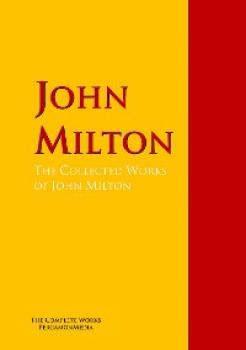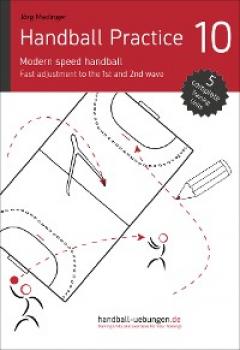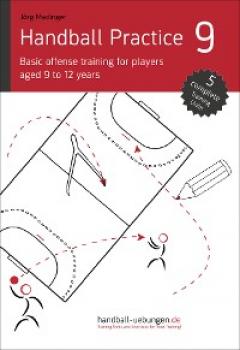ТОП просматриваемых книг сайта:
Автор
Все книги издательства АвторАннотация
This comprehensive eBook presents the complete works or all the significant works – the Œuvre – of this famous and brilliant writer in one ebook – easy-to-read and easy-to-navigate: • Paradise Lost • The Poetical Works of • Areopagitica • Paradise Regained • Milton's Comus • Milton: Minor Poems • MiltonSir Walter Alexander Raleigh • L'Allegro, Il Penseroso, Comus, and Lycidas • Poemata: Latin, Greek and Italian Poems by • THE PASSION. • ON TIME. • UPON THE CIRCUMCISION. • AT A SOLEMN MUSICK. • AN EPITAPH ON THE MARCHIONESS OF WINCHESTER. • SONG ON MAY MORNING. • ON SHAKESPEAR. • ANOTHER ON THE SAME. • L'ALLEGRO. • IL PENSEROSO. • SONNETS. • ARCADES. • LYCIDAS. • A MASK PRESENTED At LUDLOW-Castle,. &c. • POEMS ADDED IN THE EDITION. • ANNO AETATIS. ON THE DEATH OF A FAIR INFANT DYING OF A COUGH. • THE FIFTH ODE OF HORACE. LIB. I. • SONNETS. • ON THE NEW FORCERS OF CONSCIENCE UNDER THE LONG PARLIAMENT. • ON THE LORD GEN. FAIRFAX AT THE SEIGE OF COLCHESTER. • TO THE LORD GENERALL CROMWELL MAY. • TO SR HENRY VANE THE YOUNGER. • TO MR. CYRIACK SKINNER UPON HIS BLINDNESS. • PSAL. I. Done into Verse,. • PSAL. II Done Aug. Terzetti. • PSAL. III. Aug. • PSAL. IV. Aug. • PSAL. V. Aug. • PSAL. VI Aug. • PSAL. VII. Aug. • PSAL. VIII. Aug. • APRIL,. J. M. NINE OF THE PSALMS DONE INTO METRE,
• • PARADISE REGAIN'D. • • SAMSON AGONISTES • MINOR POEMS • L’ALLEGRO IL PENSEROSO • COMUS • ARCADES • ON THE NATIVITY • LYCIDAS • ON SHAKESPEARE • AT A SOLEMN MUSIC • SONNETS •.
• • PARADISE REGAIN'D. • • SAMSON AGONISTES • MINOR POEMS • L’ALLEGRO IL PENSEROSO • COMUS • ARCADES • ON THE NATIVITY • LYCIDAS • ON SHAKESPEARE • AT A SOLEMN MUSIC • SONNETS •.
Аннотация
This music book contains the original sheet music of the Folk Song «Lo, How A Rose E'er Blooming» for Piano. Easy arranged in F major.
Аннотация
Dieses Notenheft enthält die Originalnoten zum Folk-Song «My Old Kentucky Home» für Klavier, Gesang und Gitarre. Leichter Schwierigkeitsgrad in F-Dur mit Liedtext. // Dieses Notenheft enthält die Originalnoten zum Folk-Song «My Old Kentucky Home» für Klavier, Gesang und Gitarre. Leichter Schwierigkeitsgrad in F-Dur mit Liedtext.
Аннотация
Dieses Notenheft enthält die Originalnoten zum Polka-Song «Nelly Bly» für Klavier, Gesang und Gitarre. Leichter Schwierigkeitsgrad in B-Dur mit Liedtext. // Dieses Notenheft enthält die Originalnoten zum Polka-Song «Nelly Bly» für Klavier, Gesang und Gitarre. Leichter Schwierigkeitsgrad in B-Dur mit Liedtext.
Аннотация
Die Originalversion von "The Old Lamplighter " wurde 1946 veröffentlicht. Von verschiedenen Künstlern wurden in den letzten Jahrzehnten zahlreiche Bearbeitungen des Songs angefertigt. Mittlerweile gehört dieser Song zum Popular Standard. In dieser Ausgabe sind die Klaviernoten in der Tonart F-Dur im Violin- und Bassschlüssel notiert. Akkordbezeichnungen, Text und Gesangsmelodie sind in dieser Ausgabe ebenfalls enthalten.
Аннотация
This music book contains the original sheet music of the Children's Song «Rock-A-Bye Baby» for Piano, Vocals and Guitar. Easy arranged in F major with lyrics. // Dieses Notenheft enthält die Originalnoten zum Kinderlied «Rock-A-Bye Baby» für Klavier, Gesang und Gitarre. Leichter Schwierigkeitsgrad in F-Dur mit Liedtext.
Аннотация
This music book contains the original sheet music of the Children's Song «Go To Sleep My Baby» for Piano. Easy arranged in A major. // Dieses Notenheft enthält die Originalnoten zum Kinderlied «Go To Sleep My Baby» für Klavier. Leichter Schwierigkeitsgrad in A-Dur.
Аннотация
The objective of “The Sacred Scriptures” by John Biermanski, 29th edition – “Special Edition,” also written in German, is to revoke all falsifications in today's Bibles known so far (the New Testament), and to restore the original state of the verses as far as possible. In the present work, you will find the holy and true name of the living Elohim/G-d “YAHWEH” (the Elohim/G-d of Abraham, the Elohim/G-d of Isaac and the Elohim/G-d of Jacob), of the children of Israel (Exodus 3:15), to his glory in this edition, and “The New Covenant ~ The New Testament”, “The Book of Psalms” and “The Book of Daniel”, in which all verses are written in German and English with “Appendix” in English (see the “Table of Contents”). In this part is: «THE BOOK OF PSALMS» until «THE EVANGEL ACCORDING TO MATTHEW». The author was born in 1963 in North Rhine-Westphalia and completed a traineeship for wholesale and foreign trade in a pharmaceutical wholesale company. In the course of his professional development, he used to be a freelancer but was also officially employed; he has experienced a lot rises and falls throughout his life. While studying the Scriptures, he was led by the Spirit of the only God, the Almighty and the only Holy Father in heaven, whereas, by grace, he could recognize many things that are now presented as heresies to the world. In recent years he has been active in the proclamation of the Word of God in Europe, particularly in Brazil (South America), and has enlightened many people by his message, so that they get to know the true God, His holy name and His will and only obey Him – and start to think about all this, i. e. «so that they finally decide themselves in favour of the living God, instead of against Him, and their names are not erased from the divine 'Book of Life' forever.»
Handball Practice 10 - Modern speed handball: Fast adjustment to the 1st and 2nd wave - Jörg Madinger
Аннотация
Dear reader Thank you for choosing a book of the handball-uebungen.de training guide series.
Fast breaks are an important factor for successful handball game outcomes in modern handball. Further positive aspects include motivation of the team through quick goals in connection with demoralization of the opposing team as well as improvement of the attractiveness of the handball game itself. Quick adjustment from defense to offense play after winning the ball (or after a fast throw-off following a goal) in order to take advantage of the off-guard situation and score a goal through increased speed of play is the central objective of speed play with fast breaks.
From winning the ball and – quickly adjusting from defense to offense play – to initiating the first or subsequent second wave – and a well-structured action following the second wave – or the fast throw-off all these fast break elements are dealt with during the following five training units.
The first two units focus on fast break initiation and the improvement of passing precision and passing decisions for a first wave as well as carrying the ball forward after gaining ball possession. The third unit focuses on the decision-making process in outnumbered situations that may be created during the first or second wave, whereas the last two units practice well-structured playing against an off-guard and passively acting defense formation.
With these five training units, the collection offers ideas and incentives for practicing the individual fast break phases and provides the opportunity to implement a comprehensive concept that involves both the first and second wave and the fast throw-off.
This book contains the following training units: TU 1 – Improving passing precision when initiating the first wave The objective of this training unit is to improve running paths, passing and the decision-making process during the first wave. After a warm-up running exercise, the subsequent short game already includes quick adjustment exercises and long passes. During the ball familiarization phase and the goalkeeper warm-up shooting, the players practice playing long passes before they combine several actions with first wave initiation in a series of shots. The closing small group exercises finally focus on making passing decisions.
TU 2 – Quick adjustment to a fast break after a defense action ( ) The objective of this training unit is to practice the quick adjustment from defense play to fast break initiation. Following the warm-up phase with a coordination run exercise and the ball familiarization phase, the goalkeeper warm-up shooting combines a preparatory defense exercise and a series of shots for the goalkeeper. During the two subsequent defense exercises, the players practice quick adjustment from defense work to fast break countermovement. A 4-on-4 game and a sprint contest complete this training unit.
TU 3 – Improving speed play for fast break situations The objective of this training unit is to improve free play in fast break situations. Following warm-up and a short game, the players play long passes during the ball familiarization phase which will be further developed in the goalkeeper warm-up shooting exercise. This is followed by a series of shots requiring precise passes. Afterwards, the players practice free play in outnumbered, open situations during fast breaks. A closing game with gradually increasing complexity completes this training unit.
TU 4 – Developing a well-structured second wave by implementing long crossing moves and options for further playing The objective of this training unit is to develop a long crossing during the second wave. Following a warm-up running exercise, a short game, and a ball familiarization exercise, the players initially develop the long crossing during the goalkeeper warm-up shooting phase. In the subsequent series of shots which will be combined with a 1-on-0 fast break, the players practice the long crossing with compensation of the center back player. Defense players and the pivot are added for the two subsequent small group exercises, before the players implement the course 4-on-4 during the closing part of the training unit.
TU 5 – Step-by-step development of initial actions after a fast throw-off The objective of this training unit is to develop a simple initial action after a fast throw-off. Following warm-up and a coordination run exercise, the players practice the basics during the ball familiarization phase and the goalkeeper warm-up shooting. During the three subsequent exercises, the players further develop the running and passing paths and eventually combine them in order to create an initial action. In the closing game, the players implement what they practiced before.
Fast breaks are an important factor for successful handball game outcomes in modern handball. Further positive aspects include motivation of the team through quick goals in connection with demoralization of the opposing team as well as improvement of the attractiveness of the handball game itself. Quick adjustment from defense to offense play after winning the ball (or after a fast throw-off following a goal) in order to take advantage of the off-guard situation and score a goal through increased speed of play is the central objective of speed play with fast breaks.
From winning the ball and – quickly adjusting from defense to offense play – to initiating the first or subsequent second wave – and a well-structured action following the second wave – or the fast throw-off all these fast break elements are dealt with during the following five training units.
The first two units focus on fast break initiation and the improvement of passing precision and passing decisions for a first wave as well as carrying the ball forward after gaining ball possession. The third unit focuses on the decision-making process in outnumbered situations that may be created during the first or second wave, whereas the last two units practice well-structured playing against an off-guard and passively acting defense formation.
With these five training units, the collection offers ideas and incentives for practicing the individual fast break phases and provides the opportunity to implement a comprehensive concept that involves both the first and second wave and the fast throw-off.
This book contains the following training units: TU 1 – Improving passing precision when initiating the first wave The objective of this training unit is to improve running paths, passing and the decision-making process during the first wave. After a warm-up running exercise, the subsequent short game already includes quick adjustment exercises and long passes. During the ball familiarization phase and the goalkeeper warm-up shooting, the players practice playing long passes before they combine several actions with first wave initiation in a series of shots. The closing small group exercises finally focus on making passing decisions.
TU 2 – Quick adjustment to a fast break after a defense action ( ) The objective of this training unit is to practice the quick adjustment from defense play to fast break initiation. Following the warm-up phase with a coordination run exercise and the ball familiarization phase, the goalkeeper warm-up shooting combines a preparatory defense exercise and a series of shots for the goalkeeper. During the two subsequent defense exercises, the players practice quick adjustment from defense work to fast break countermovement. A 4-on-4 game and a sprint contest complete this training unit.
TU 3 – Improving speed play for fast break situations The objective of this training unit is to improve free play in fast break situations. Following warm-up and a short game, the players play long passes during the ball familiarization phase which will be further developed in the goalkeeper warm-up shooting exercise. This is followed by a series of shots requiring precise passes. Afterwards, the players practice free play in outnumbered, open situations during fast breaks. A closing game with gradually increasing complexity completes this training unit.
TU 4 – Developing a well-structured second wave by implementing long crossing moves and options for further playing The objective of this training unit is to develop a long crossing during the second wave. Following a warm-up running exercise, a short game, and a ball familiarization exercise, the players initially develop the long crossing during the goalkeeper warm-up shooting phase. In the subsequent series of shots which will be combined with a 1-on-0 fast break, the players practice the long crossing with compensation of the center back player. Defense players and the pivot are added for the two subsequent small group exercises, before the players implement the course 4-on-4 during the closing part of the training unit.
TU 5 – Step-by-step development of initial actions after a fast throw-off The objective of this training unit is to develop a simple initial action after a fast throw-off. Following warm-up and a coordination run exercise, the players practice the basics during the ball familiarization phase and the goalkeeper warm-up shooting. During the three subsequent exercises, the players further develop the running and passing paths and eventually combine them in order to create an initial action. In the closing game, the players implement what they practiced before.
Аннотация
The five training units in this book focus on training of handball basic skills for young players aged 9 to 12 years. The individual training units deal with passing precision, shooting movements, dribbling technique, breaking away from man coverage, and passing feints, respectively. The players develop the individual skills methodically and step by step from basic to complex level. You may adjust the complexity of the exercises to your team’s level of performance by intensifying the individual drills.
This book contains the following training units: TU 1 – Improving passing precision during running movements The objective of this training unit is to improve the passing precision during running movements, in particular. Following warm-up consisting of combined running moves and passing variants and a short game, the players practice passing while running at full speed during the ball familiarization phase. The goalkeeper warm-up shooting and the subsequent series of shots also focus on playing passes while running at full speed. A second series of shots combines double passes on a defined running path with quick passes in direction of the goal. Finally, the players practice playing precise passes under pressure in a small group game and a closing game.
TU 2 – Developing and improving the shooting movement This training unit focuses on acquiring and improving correct shooting movements. This means shooting while standing and shooting while running, without a jump however, in order to highlight arm and body movements. Following a warm-up exercise which already involves shots, the players practice the shoulder and arm rotation for shooting and subsequently combine these moves in a passing competition. In a short game, the players implement the shooting movements in a game situation. This is followed by the goalkeeper warm-up shooting and a closing series of shots which focuses on shooting at the goal. TU 3 – Improving the dribbling technique while observing the game situation The objective of this training unit is to improve the dribbling technique focusing on simultaneous observation of the game situation. The players combine movements with dribbling already during the warm-up exercise; in a sprint contest and a short game, they practice dribbling at increased speed. Following the goalkeeper warm-up shooting, there will be a series of shots with additional coordination tasks in which the simultaneous observation of signs will be added. The subsequent small group exercise demands observation of the game situation while dribbling the ball. In a closing game, the players should implement what they practiced before.
TU 4 – Breaking away from man coverage using running feints This training unit focuses on breaking away from man coverage without a ball, by means of running feints. Following warm-up, a sprint contest with changes of direction, and a team ball variant, the players practice quick changes of direction one more time during the goalkeeper warm-up shooting exercise. Subsequently, there will be an individual offense exercise focusing on breaking away by means of running feints. The players will further elaborate this topic in two small group exercises and finally implement what they practiced before in free play.
TU 5 – Gaining positional advantage using passing feints The key topics of this training unit are passing feints and how to combine them with a breakthrough or a return pass to a teammate. Following a warm-up running exercise, the players already learn how to pass the ball cleverly in a short game; this will be further developed in the ball familiarization phase. In the goalkeeper warm-up shooting exercise, the players practice passing feints in combination with a 1-on-1 breakthrough; in the subsequent series of shots, they combine the passing feint with a return pass to their teammate. Both variants will be implemented twice in the subsequent 1-on-1, 3-on-2, and 4-on-4 games.
This book contains the following training units: TU 1 – Improving passing precision during running movements The objective of this training unit is to improve the passing precision during running movements, in particular. Following warm-up consisting of combined running moves and passing variants and a short game, the players practice passing while running at full speed during the ball familiarization phase. The goalkeeper warm-up shooting and the subsequent series of shots also focus on playing passes while running at full speed. A second series of shots combines double passes on a defined running path with quick passes in direction of the goal. Finally, the players practice playing precise passes under pressure in a small group game and a closing game.
TU 2 – Developing and improving the shooting movement This training unit focuses on acquiring and improving correct shooting movements. This means shooting while standing and shooting while running, without a jump however, in order to highlight arm and body movements. Following a warm-up exercise which already involves shots, the players practice the shoulder and arm rotation for shooting and subsequently combine these moves in a passing competition. In a short game, the players implement the shooting movements in a game situation. This is followed by the goalkeeper warm-up shooting and a closing series of shots which focuses on shooting at the goal. TU 3 – Improving the dribbling technique while observing the game situation The objective of this training unit is to improve the dribbling technique focusing on simultaneous observation of the game situation. The players combine movements with dribbling already during the warm-up exercise; in a sprint contest and a short game, they practice dribbling at increased speed. Following the goalkeeper warm-up shooting, there will be a series of shots with additional coordination tasks in which the simultaneous observation of signs will be added. The subsequent small group exercise demands observation of the game situation while dribbling the ball. In a closing game, the players should implement what they practiced before.
TU 4 – Breaking away from man coverage using running feints This training unit focuses on breaking away from man coverage without a ball, by means of running feints. Following warm-up, a sprint contest with changes of direction, and a team ball variant, the players practice quick changes of direction one more time during the goalkeeper warm-up shooting exercise. Subsequently, there will be an individual offense exercise focusing on breaking away by means of running feints. The players will further elaborate this topic in two small group exercises and finally implement what they practiced before in free play.
TU 5 – Gaining positional advantage using passing feints The key topics of this training unit are passing feints and how to combine them with a breakthrough or a return pass to a teammate. Following a warm-up running exercise, the players already learn how to pass the ball cleverly in a short game; this will be further developed in the ball familiarization phase. In the goalkeeper warm-up shooting exercise, the players practice passing feints in combination with a 1-on-1 breakthrough; in the subsequent series of shots, they combine the passing feint with a return pass to their teammate. Both variants will be implemented twice in the subsequent 1-on-1, 3-on-2, and 4-on-4 games.










